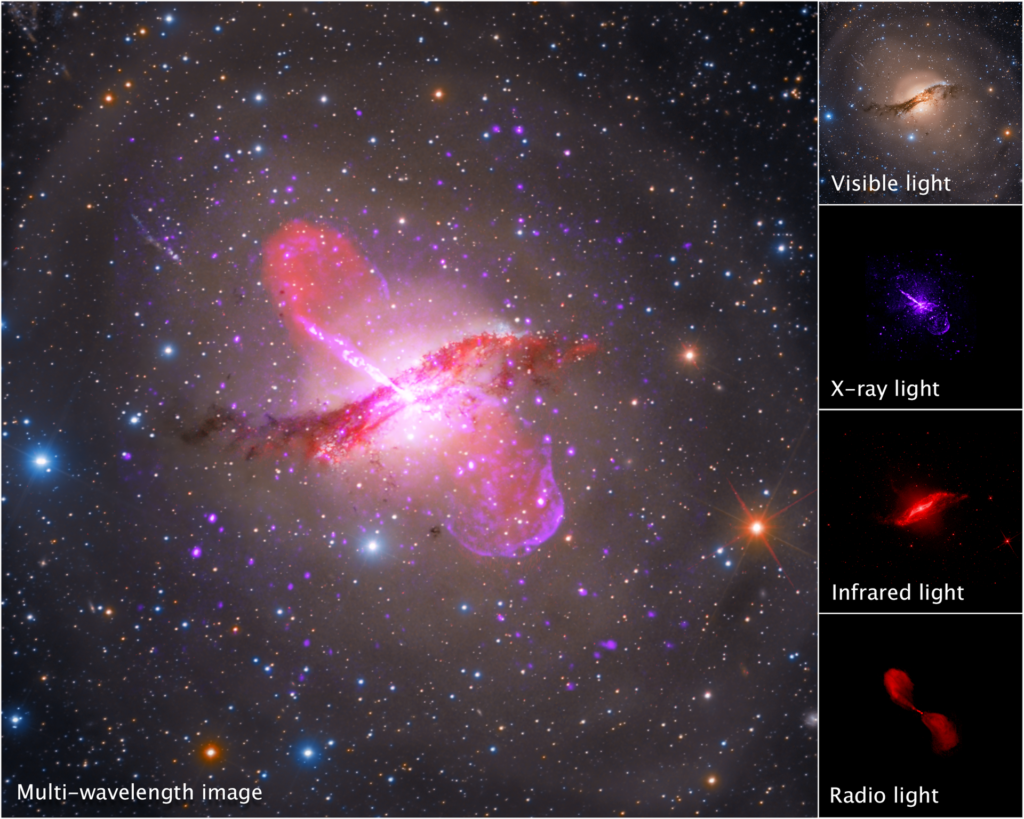When matter from the galaxies starts to accrete into super massive black holes, an enormous amount of energy is released across the whole electromagnetic spectrum (from radio emission up to X- and γ- rays). This constitutes the characteristic signature of the class of Active Galactic Nuclei (AGN). The mass of the super-massive black holes varies between millions to ten billions times the solar masses. In many cases, the power of a single AGN with a size that is similar to our Solar System is higher than the power emitted by the stellar population of its host galaxy.

A great example of active galaxy is Centaurus A, also known as NGC 5128 or Cen A. Cen A located about 12 million light years from Earth is the fifth brightest galaxy in the sky and is famous for the dust lane across its middle and a giant jet blasting away from the supermassive black hole at its center. It is being investigated by means of observations in all spectral regions, from radio via infrared and optical wavelengths to X- and gamma-rays. It is one of the most extensively studied objects in the southern sky.
Multi-wavelength observations of Centaurus A allow astronomers to develop a comprehensive view of how the various components of this fascinating galaxy interact with one another on different scales. On images obtained at optical wavelengths, thick dust layers almost completely obscure the galaxy’s centre. This structure was first reported by Sir John Herschel in 1847. Until 1949, NGC 5128 was thought to be a strange object in the Milky Way, but it was then identified as a powerful radio galaxy and designated Centaurus A. There is strong evidence that Centaurus A is a merger of an elliptical with a spiral galaxy, since elliptical galaxies would not have had enough dust and gas to form the young, blue stars seen along the edges of the dust lane. The core of Centaurus A is the smallest known extragalactic radio source, only 10 light-days across. A jet of high-energy particles from this centre is observed in radio and X-ray images. The core probably contains a supermassive black hole with a mass of about 100 million solar masses.
